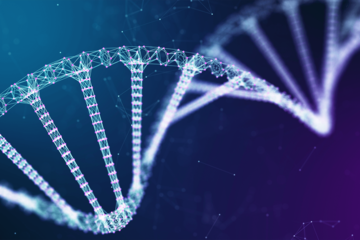We found 14 results that contain "digital promise"
Posted on: #iteachmsu

Digital Education
K-12 combines technology with education to create high quality and customised learning syllabus for the students from kindergarten to 12th class. K-12 powered online schools are slowly gaining acceptance as it creates a beautiful blend between traditional education with modern technology and tools for digital learning.
K-12 combines technology with education to create high quality and customised learning syllabus for the students from kindergarten to 12th class. K-12 powered online schools are slowly gaining acceptance as it creates a beautiful blend between traditional education with modern technology and tools for digital learning.
K-12 combines technology with education to create high quality and customised learning syllabus for the students from kindergarten to 12th class. K-12 powered online schools are slowly gaining acceptance as it creates a beautiful blend between traditional education with modern technology and tools for digital learning.
Authored by:
Divya Sawant

Posted on: #iteachmsu


Digital Education
K-12 combines technology with education to create high quality and ...
Authored by:
Wednesday, Dec 23, 2020
Posted on: #iteachmsu

ASSESSING LEARNING
Are there any advances in this direction that you think hold promise?
The basic idea of intelligence:An explosion is that once machines reach a certain level of intelligence, they’ll be able to work on AI just like we do and improve their own capabilities — redesign their own hardware and so on — and their intelligence will zoom off the charts. There’s an area emerging called “cyber-physical systems” about systems that couple computers to the real world. With a cyber-physical system, you’ve got a bunch of bits representing an air traffic control program, and then you’ve got some real airplanes, and what you care about is that no airplanes collide. You’re trying to prove a theorem about the combination of the bits and the physical world. What you would do is write a very conservative mathematical description of the physical world — airplanes can accelerate within such-and-such envelope — and your theorems would still be true in the real world as long as the real world is somewhere inside the envelope of behaviors.
Yet you’ve pointed out that it might not be mathematically possible to formally verify AI systems.
There’s a general problem of “undecidability” in a lot of questions you can ask about computer programs. Alan Turing showed that no computer program can decide whether any other possible program will eventually terminate and output an answer or get stuck in an infinite loop. So if you start out with one program, but it could rewrite itself to be any other program, then you have a problem, because you can’t prove that all possible other programs would satisfy some property.
Yet you’ve pointed out that it might not be mathematically possible to formally verify AI systems.
There’s a general problem of “undecidability” in a lot of questions you can ask about computer programs. Alan Turing showed that no computer program can decide whether any other possible program will eventually terminate and output an answer or get stuck in an infinite loop. So if you start out with one program, but it could rewrite itself to be any other program, then you have a problem, because you can’t prove that all possible other programs would satisfy some property.
Authored by:
Rupali

Posted on: #iteachmsu


Are there any advances in this direction that you think hold promise?
The basic idea of intelligence:An explosion is that once machines r...
Authored by:
ASSESSING LEARNING
Tuesday, Jan 12, 2021
Posted on: #iteachmsu

DISCIPLINARY CONTENT
Support Student Learning in a Digital Learning Environment
Educator provides evidence
of their understanding of communication and outlines and provides evidence of a lesson that uses technology to support students’ use of communication in learning.
Method Components
What are the 4Cs?
The 4Cs for 21st century learning are Creativity, Critical Thinking, Communication, and Collaboration. They are part of the framework for 21st Century Learning and are designed to support student learning in today’s world and are skills they can use in college and career.
What is communication (and what isn’t it)?
The P21 framework emphasizes effective use of oral, written, and nonverbal communication skills for multiple purposes (e.g., to inform, instruct, motivate, persuade, and share ideas). It also focuses on effective listening, using technology to communicate, and being able to evaluate the effectiveness of communication efforts—all within diverse contexts (adapted from P21). Note that working in partners is a great way to collaborate or build shared understanding but a critical part of communication is sharing with an authentic audience.
Example strategies that use technology to support communication in the classroom:
Host a TED-style conference or showcases for your students to present original ideas on a topic of interest to them to an authentic, external audience. Record and post the videos to a youtube stream.
Provide opportunities to listen and ask questions through back channel tools like Today’s Meet or even Twitter.
Have your students publish their work through blogs, by creating websites, and by building other online resources that are shared with authentic audiences.
For other ideas see the resources below.
of their understanding of communication and outlines and provides evidence of a lesson that uses technology to support students’ use of communication in learning.
Method Components
What are the 4Cs?
The 4Cs for 21st century learning are Creativity, Critical Thinking, Communication, and Collaboration. They are part of the framework for 21st Century Learning and are designed to support student learning in today’s world and are skills they can use in college and career.
What is communication (and what isn’t it)?
The P21 framework emphasizes effective use of oral, written, and nonverbal communication skills for multiple purposes (e.g., to inform, instruct, motivate, persuade, and share ideas). It also focuses on effective listening, using technology to communicate, and being able to evaluate the effectiveness of communication efforts—all within diverse contexts (adapted from P21). Note that working in partners is a great way to collaborate or build shared understanding but a critical part of communication is sharing with an authentic audience.
Example strategies that use technology to support communication in the classroom:
Host a TED-style conference or showcases for your students to present original ideas on a topic of interest to them to an authentic, external audience. Record and post the videos to a youtube stream.
Provide opportunities to listen and ask questions through back channel tools like Today’s Meet or even Twitter.
Have your students publish their work through blogs, by creating websites, and by building other online resources that are shared with authentic audiences.
For other ideas see the resources below.
Authored by:
NC state
Posted on: #iteachmsu

Support Student Learning in a Digital Learning Environment
Educator provides evidence
of their understanding of communication ...
of their understanding of communication ...
Authored by:
DISCIPLINARY CONTENT
Monday, Jan 11, 2021
Posted on: #iteachmsu

NAVIGATING CONTEXT
Support Student Learning in a Digital Learning Environment
What is communication (and what isn’t it)?
The P21 framework emphasizes the effective use of oral, written, and nonverbal communication skills for multiple purposes (e.g., to inform, instruct, motivate, persuade, and share ideas). It also focuses on effective listening, using technology to communicate, and being able to evaluate the effectiveness of communication efforts—all within diverse contexts (adapted from P21). Note that working in partners is a great way to collaborate or build shared understanding but a critical part of communication is sharing with an authentic audience.
Example strategies that use technology to support communication in the classroom:
Host a TED-style conference or showcases for your students to present original ideas on a topic of interest to them to an authentic, external audience. Record and post the videos to a youtube stream.
Provide opportunities to listen and ask questions through backchannel tools like Today’s Meet or even Twitter.
Have your students publish their work through blogs, by creating websites, and by building other online resources that are shared with authentic audiences.
For other ideas see the resources below.
https://youtu.be/KUM4AECEcUA
The P21 framework emphasizes the effective use of oral, written, and nonverbal communication skills for multiple purposes (e.g., to inform, instruct, motivate, persuade, and share ideas). It also focuses on effective listening, using technology to communicate, and being able to evaluate the effectiveness of communication efforts—all within diverse contexts (adapted from P21). Note that working in partners is a great way to collaborate or build shared understanding but a critical part of communication is sharing with an authentic audience.
Example strategies that use technology to support communication in the classroom:
Host a TED-style conference or showcases for your students to present original ideas on a topic of interest to them to an authentic, external audience. Record and post the videos to a youtube stream.
Provide opportunities to listen and ask questions through backchannel tools like Today’s Meet or even Twitter.
Have your students publish their work through blogs, by creating websites, and by building other online resources that are shared with authentic audiences.
For other ideas see the resources below.
https://youtu.be/KUM4AECEcUA
Authored by:
Friday Institute at NC State

Posted on: #iteachmsu


Support Student Learning in a Digital Learning Environment
What is communication (and what isn’t it)?
The P21 framework emphas...
The P21 framework emphas...
Authored by:
NAVIGATING CONTEXT
Thursday, Jan 14, 2021
Posted on: #iteachmsu

ASSESSING LEARNING
Communication to Support Student Learning in a Digital Learning Environment
Key Method
Educator provides evidence of their understanding of communication and outlines and provides evidence of a lesson that uses technology to support students’ use of communication in learning.
Method Components
What are the 4Cs?
The 4Cs for 21st century learning are Creativity, Critical Thinking, Communication, and Collaboration. They are part of the framework for 21st Century Learning and are designed to support student learning in today’s world and are skills they can use in college and career.
What is communication (and what isn’t it)?
The P21 framework emphasizes effective use of oral, written, and nonverbal communication skills for multiple purposes (e.g., to inform, instruct, motivate, persuade, and share ideas). It also focuses on effective listening, using technology to communicate, and being able to evaluate the effectiveness of communication efforts—all within diverse contexts (adapted from P21). Note that working in partners is a great way to collaborate or build shared understanding but a critical part of communication is sharing with an authentic audience.
Educator provides evidence of their understanding of communication and outlines and provides evidence of a lesson that uses technology to support students’ use of communication in learning.
Method Components
What are the 4Cs?
The 4Cs for 21st century learning are Creativity, Critical Thinking, Communication, and Collaboration. They are part of the framework for 21st Century Learning and are designed to support student learning in today’s world and are skills they can use in college and career.
What is communication (and what isn’t it)?
The P21 framework emphasizes effective use of oral, written, and nonverbal communication skills for multiple purposes (e.g., to inform, instruct, motivate, persuade, and share ideas). It also focuses on effective listening, using technology to communicate, and being able to evaluate the effectiveness of communication efforts—all within diverse contexts (adapted from P21). Note that working in partners is a great way to collaborate or build shared understanding but a critical part of communication is sharing with an authentic audience.
Authored by:
Greg

Posted on: #iteachmsu


Communication to Support Student Learning in a Digital Learning Environment
Key Method
Educator provides evidence of their understanding of com...
Educator provides evidence of their understanding of com...
Authored by:
ASSESSING LEARNING
Thursday, Dec 31, 2020
Posted on: #iteachmsu

DISCIPLINARY CONTENT
Digital Collaborative Learning for the 21st Century 2.0 (Learning Community for AY2023-2024)
Digital Collaborative Learning for the 21st Century 2.0 (Learning Community for AY2023-2024)
Authored by:
906

Posted on: #iteachmsu


Digital Collaborative Learning for the 21st Century 2.0 (Learning Community for AY2023-2024)
Digital Collaborative Learning for the 21st Century 2.0 (Learning Community for AY2023-2024)
Authored by:
DISCIPLINARY CONTENT
Monday, Sep 25, 2023
Posted on: #iteachmsu

Higher Education
Higher education is also slowly adopting the digital era. Online certifications or the certifications which add value to their degree are becoming popular among the college students. Most of such courses are targeted to improve employability of the students. Availability of many more such courses can help to make online education popular in India.
https://www.youtube.com/watch?v=89mXAfqE4jI&ab_channel=HigherEducation
https://www.youtube.com/watch?v=89mXAfqE4jI&ab_channel=HigherEducation
Authored by:
Divya Sawnt

Posted on: #iteachmsu


Higher Education
Higher education is also slowly adopting the digital era. Online ce...
Authored by:
Wednesday, Dec 23, 2020
Posted on: #iteachmsu

ASSESSING LEARNING
Business Intelligence and Data Science
Business Intelligence and Data Science are two of the most recurring terms in the digital era. While both of them involve the use of data, they are totally different from one another. Data Science is the bigger pool containing greater information, BI can be thought of as a part of the bigger picture.
What is Business Intelligence?
Business Intelligence is a process of collecting, integrating, analyzing, and presenting the data. With Business Intelligence, executives and managers can have a better understanding of decision-making. This process is carried out through software services and tools.
Using Business Intelligence, organizations are able to several strategic and operational business decisions. Furthermore, BI tools are used for the analysis and creation of reports. They are also used for producing graphs, dashboards, summaries, and charts to help the business executives to make better decisions.
What is Business Intelligence?
Business Intelligence is a process of collecting, integrating, analyzing, and presenting the data. With Business Intelligence, executives and managers can have a better understanding of decision-making. This process is carried out through software services and tools.
Using Business Intelligence, organizations are able to several strategic and operational business decisions. Furthermore, BI tools are used for the analysis and creation of reports. They are also used for producing graphs, dashboards, summaries, and charts to help the business executives to make better decisions.
Authored by:
Rupali

Posted on: #iteachmsu


Business Intelligence and Data Science
Business Intelligence and Data Science are two of the most rec...
Authored by:
ASSESSING LEARNING
Tuesday, Jan 5, 2021

